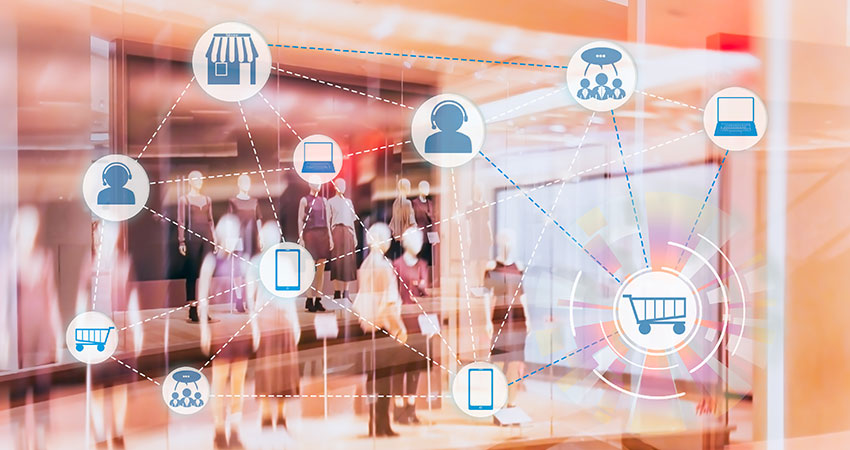In retail, it’s common knowledge that your business must adapt to changing consumer preferences to stay relevant. But economic disruption has escalated that need to be nimble like never before.
The COVID-19 pandemic dramatically accelerated the retail industry’s call to digital transformation. Well-known retailers such as Walmart, Target and even H-E-B already had the technology and processes necessary to respond to COVID-19 with relative speed, but others found their entire business models upended overnight.
Nonessential businesses forced to close their doors at the beginning of lockdown quickly updated their strategies to continue engaging with their shoppers. Certain brands created or built on assisted shopping channels, including buy online, pick up in store (BOPIS) and delivery models. Others, such as Sarah Akram Skincare, launched virtual classes and consultations. Some, including direct-to-consumer shapewear company Shapermint, started producing relevant livestreams like at-home yoga practices to build rapport with customers. Even local single-location restaurants have added QR codes for dine-in, zero-touch menus.
Many retailers did a combination of the above. And virtually all retailers rushed to make updates to their website and mobile experiences to reflect our new reality.
Are These Shifts Here to Stay?
Some of these changes will stick around long after doors reopen, and others won’t. This depends mainly on the nature of the service or product. What will stay, however, is a renewed focus on building community in retail.
Case in point: Sephora is limiting how many shoppers it can allow in its stores, so it ramped up clientele services in turn. It turned current restrictions into an opportunity to create an even more high-touch model, offering customers a guided experience via beauty advisors who offer in-store demonstrations. And Best Buy tried out something similar when it tested appointment-only shopping experiences where an individual employee assisted each shopper.
With the uncertainty this pandemic brings, how can you confidently integrate new online experiences and digital touchpoints with in-store strategies? Below are three points to consider:
Don’t Assume 100% Digital Is the Way Forward
As mentioned above, not everything will stay digital; some products and services simply require that in-person touch. One example that sticks out in my mind is my local comic book shop. Before COVID-19, it hosted a weekly Friday Night Magic party for a popular card game called Magic: The Gathering.
Since the pandemic hit, all their events moved online, as were other Magic-related gatherings around the globe. I also learned that the game’s manufacturer faced delays in the production of new cards. The local shop owner shared that people were quite upset with these moves; they liked the in-person element of the parties and watching for new cards each week. This brings up the question of whether the Magic brand itself failed to listen to the demands and preferences of its customer base.
As the Landscape Shifts, Customer Insights Are Key
Your customers will tell you what they want, but you have to listen. One obvious thing to watch is BOPIS. There have been incremental, sustainable trends over the last several years that have shown continued growth in BOPIS. It’s expensive for retailers to implement, but it’s the way of the future. In various shopper studies, customers request an option to “click and collect.”
Be mindful of what people are asking for and whether that will translate once the economy bounces back. After all, people are creatures of habit — they like going back to what they’re used to. So, in the example above, BOPIS technology is worth investing in because it’s a long-term trend. But other major investments might not be. Smaller efforts to dig back into your brand promise and connect with customers (using simple, effective social media campaigns, for example) could be the better choice in those cases.
Re-imagine Your Physical Space
Big grocers and retailers have perfected the art of curbside pickup. However, many of their returns processes are underwhelming, if not a dreaded task. You wait in line for a long time to process your items, often with understandably frustrated customers and employees, and there’s no tangible experience involved. You might also remember that the card you used to make the previous purchase was left at home.
There’s a huge opportunity for stores to re-imagine that part of the solution into something that looks less like a tedious checkout process and more like a customer-centric experience. DTC brands have the opportunity to take their ecommerce infrastructure and create localized store experiences. They don’t need point-of-sale infrastructure; they can just pull a version of Amazon Go. And on top of that, it’s easy to find short-term three- or six-month leases right now, making this model even more appealing.
The COVID-19 pandemic has forced retailers to think about how they convert an analog experience to a digital one. What is the closest facsimile they can make of their in-person experience? How can they localize their strategy and try to foster an emotional connection? By considering these questions, listening to your customers, and weighing short- vs. long-term investments, you can position your business for success in this “new normal” environment.
Scott T. Reese is chief technology officer at Harbor Retail

